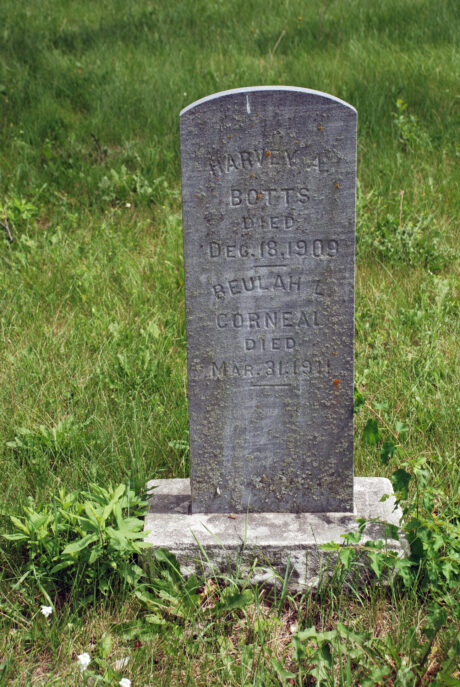from the series Tales from Pioneers and Soldiers Memorial Cemetery
228th in a Series
By SUE HUNTER WEIR
Phannie Corneal was willing to try anything to save her daughter’s life. On January 18, 1911, she and her daughter, Beulah Corneal, set out for Denver, Colorado hoping that the change in climate would restore Beulah’s health.

Three months earlier, Beulah had been diagnosed with what doctors initially thought was typhoid. A brief mention in the November 4th, 1910, issue of the Appeal newspaper announced that she seemed to be recovering, and a few weeks later offered an update indicating that Beulah was “able to get up, but still unable to go out.” The following month, she was admitted to the hospital to be treated for tuberculosis of the skin.
Phannie and Beulah spent two months in Denver and returned to Minneapolis on March 18, 1911. Beulah died from tuberculosis on March 30, 1911, less than two weeks later. She was 23 years, four months, and two days old. Phannie’s wishes for her daughter’s recovery had gone unanswered.
Beulah was Phannie’s fourth youngest child. Phannie had three older children with her first husband, Henry Botts. She and her second husband, William N. Corneal, had two daughters, Beulah and Grazia.
Beulah was a remarkable young woman. At a time when employment opportunities for African-American women were extremely limited, she worked as a doctor’s assistant. Her employer, J. Francis Schefcik, was an “oculist” and “aurist”, (i.e., a doctor specializing in diseases of the eyes and ears, respectively). She also worked at a number of other jobs, whether out of ambition or necessity is not clear. She was a dressmaker, a piano teacher, a social correspondent, and a sales representative for the local African-American newspaper Twin City Star. She and her younger sister were also talented musicians. Billed as the Corneal Sisters, they played numerous concerts in the Twin Cities, many of them benefit concerts. Beulah played the piano, and Grazia played the violin.
Phannie’s daughters appear to have inherited her work ethic and ambition. During the ten or so years that she lived in Minneapolis, Phannie ran a boarding house and taught china painting and fancy needlework. In 1911, she opened “the Little Unique Ice Cream Parlor” which offered her customers “pure” ice cream, sodas, and cigars. And she still found time to do charitable work for St. Peter’s AME Church, the Crispus Attucks Home, and the Sojourner Truth Chapter of the Women’s Christian Temperance Union.
Beulah’s funeral was held at St. Peter’s AME Church and was, according to the Star, “very impressive.” Her casket was “covered with flowers.” In June of that year, she was among those honored at a meeting of the Minneapolis Sunday Forum held at Bethesda Baptist Church. Charles Sumner Smith, publisher of the Twin City Star, delivered her eulogy.
Phannie and her children lived in Minneapolis from about 1909 until the early 1920s, at which point she moved to St. Louis, Missouri. The years that she spent in Minneapolis were marked by loss and could not have been happy ones. In less than five years, she lost three of her five children. A little over a year before Beulah died, Phannie had lost her only son, Harvey Botts, to tuberculosis on December 20, 1909. He was 28 years old and had worked as a bookkeeper. Josephine Botts Galbrath, Beulah’s half-sister, also died from an aortic aneurysm on July 11, 1914. She was 30 years old and widowed.
Beulah, Harvey, and Josephine are all buried in the Minneapolis Pioneers and Soldiers Memorial Cemetery. Beulah and Harvey are buried next to each other and their names are inscribed on the same headstone. Josephine is buried in another section of the cemetery, and her grave is unmarked. William Corneal, Beulah’s father, is also buried in the Cemetery, but it appears that he and Phannie were divorced. He died from pneumonia on January 19, 1917, and was buried in the paupers section.
Phannie spent the last 20 or so years of her life living with or close to her daughter Grazia in St. Louis. The exact date of Phannie’s death and her burial location are unknown, but she appears to have died sometime in the 1940s. She was living with Grazia in 1940, but was no longer living with her when the 1950 census was taken.
Sue Hunter Weir is chair of Friends of the Cemetery, an organization dedicated to preserving and maintaining Minneapolis Pioneers and Soldiers Memorial Cemetery. She has lived in Phillips for almost 50 years and loves living in such a historic community.









